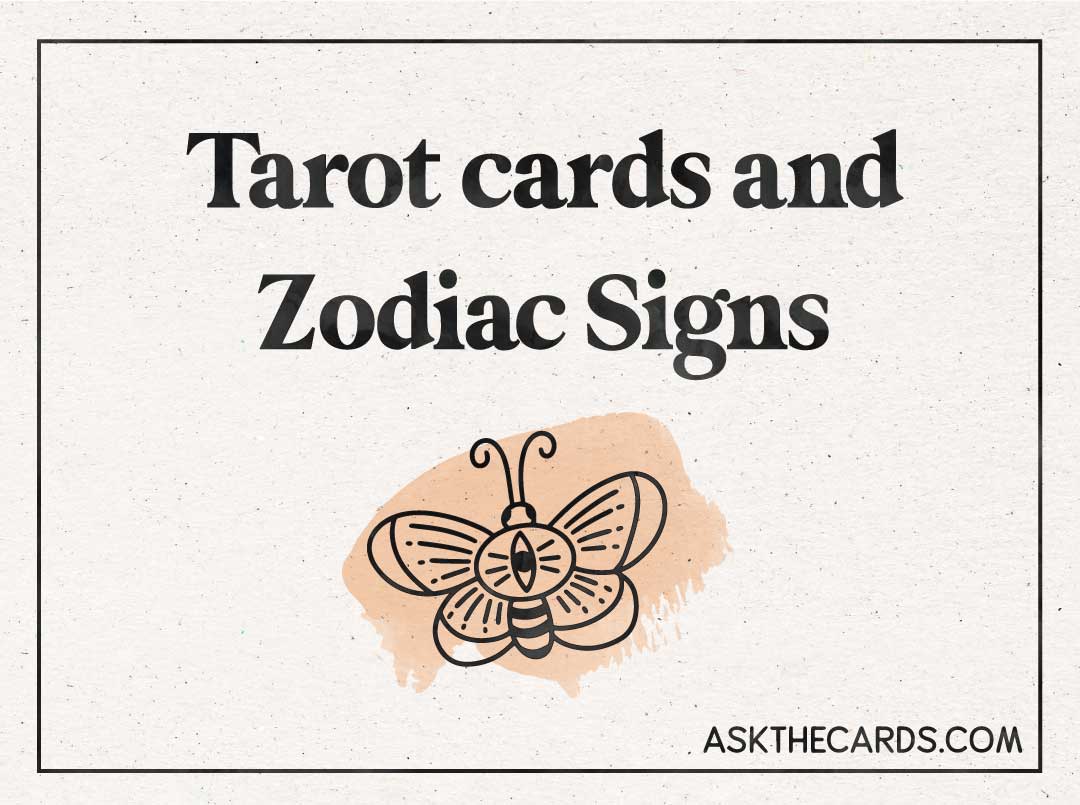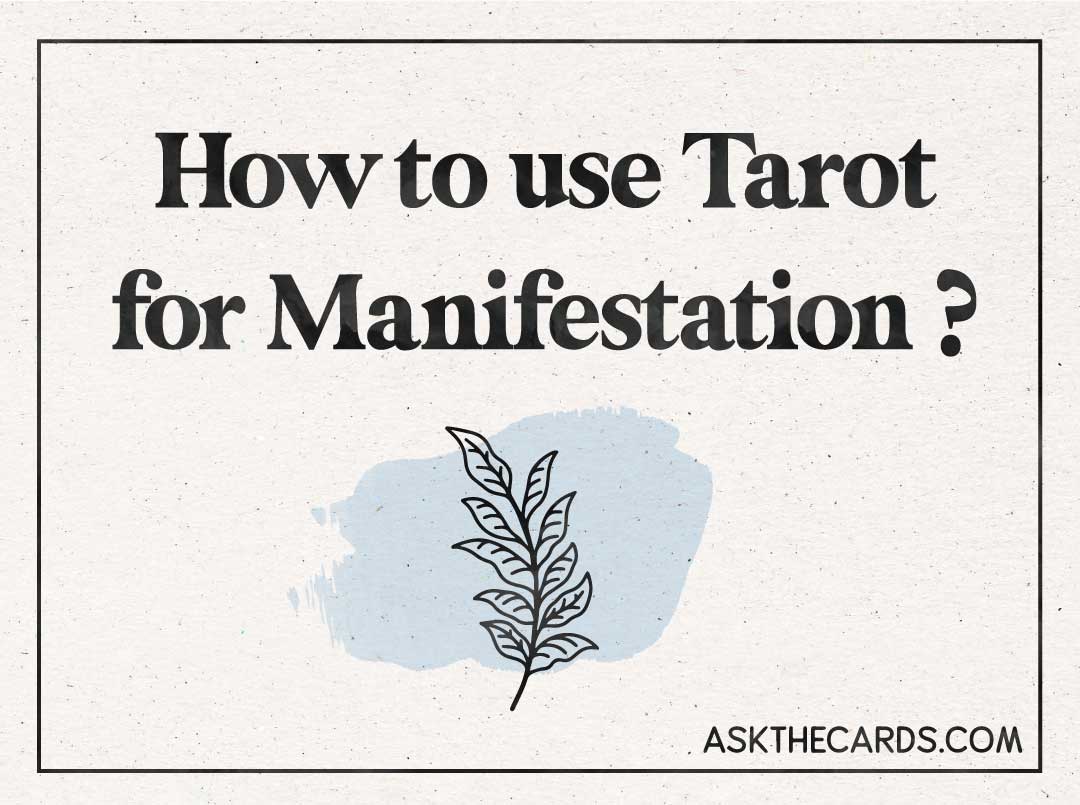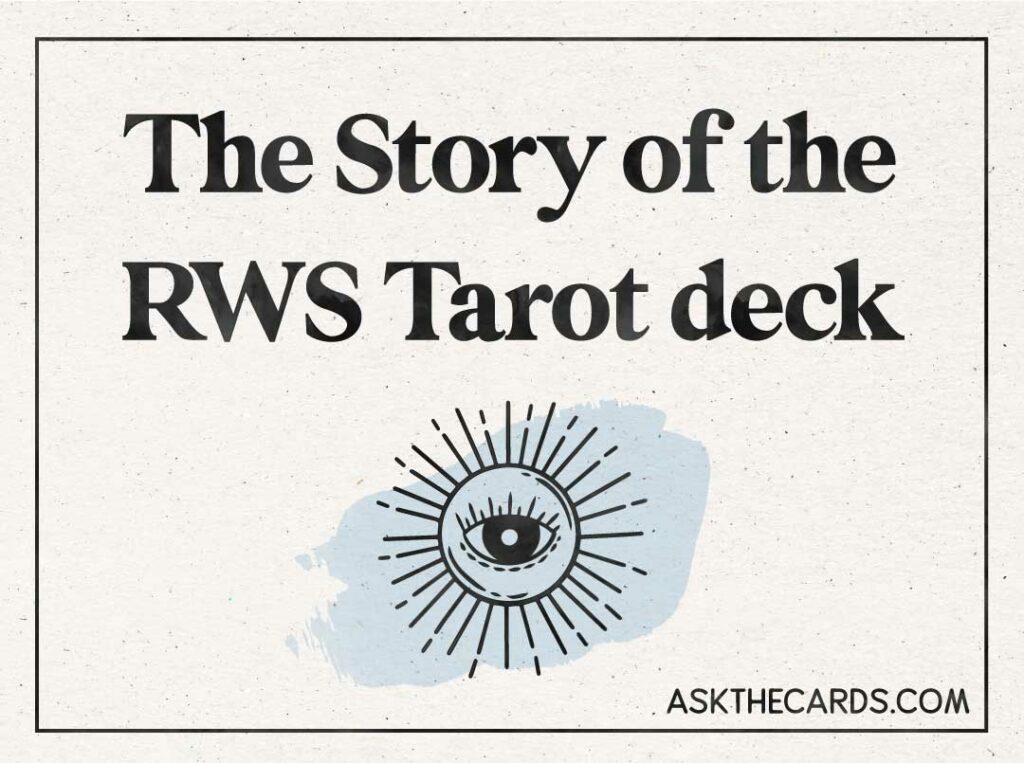
If you’ve ever seen a tarot reading on a tv show, or if you’ve ever experienced a tarot reading session yourself, it’s highly likely that you have come across the Rider-Waite-Smith tarot deck.
After all, it is one of the most popular and commonly used tarot decks in the entire world.
In fact, some people say that it is this tarot deck that truly made tarot a global phenomenon in the past century.
Ever since its inception, the Rider-Waite-Smith deck has captured the imagination of tarot readers, enthusiasts, and regular people alike.
There is a good reason why that is the case. This deck perfectly blends the traditional essence of the tarot with simple, yet stunning artwork and deep symbolism. And it does so in a way that is easy to understand and interpret.
So, what is the story of the Rider-Waite-Smith tarot?
The story of this deck starts in 1909 when Arthur E. Waite and Pamela C. Smith collaborated to create a new deck of tarot cards that would make this spiritual tool much more accessible to the common people. This deck was originally published by the Rider company, hence the name Rider-Waite-Smith deck. Fast forward to today, and it is estimated that around 100 million copies of the deck exist across 20 countries.

History of The Deck
Arthur Edward Waite and Pamela Colman Smith were both members of the Hermetic Order of the Golden Dawn. It was basically a secret society that was devoted to the practice of occult Hermeticism and metaphysics.
Arthur E. Waite

Arthur Waite was a British poet, scholar, spiritual seeker, and mystic who used to earn his living with freelance writing and translation.
He is best known for his work in the Hermetic Order of the Golden Dawn and for being an influential figure in the occult movement of the 20th century.
It was his fascination for all things occult that led him to the Order in the first place.
And it was probably the reason why he played such a huge role in the creation of the Rider-Waite-Smith tarot deck. In fact, even before this deck was created, he had already written a book titled A Handbook of Cartomancy, Fortune-Telling, and Occult Divination ( available on amazon HERE) in 1889. It was one of the first books in English on how to read tarot.
Pamela C. Smith
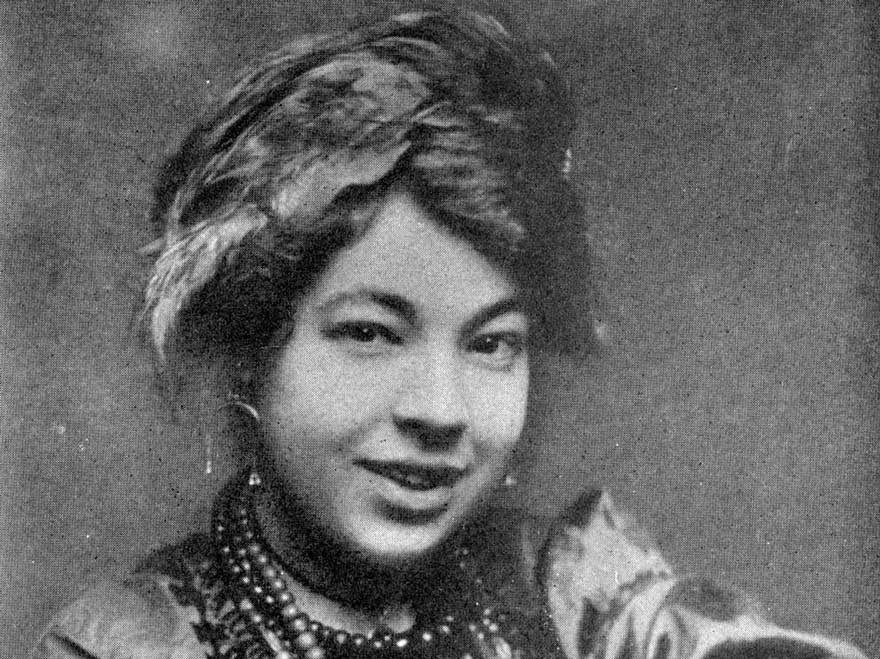
Pamela Smith was an artist in every sense of the word. In fact, she had studied art at the Pratt Institute in New York from 1893 to 1897. Then, she became an illustrator, and in 1901, she established a studio in London. There, she used to host weekly open houses for people involved in various artistic fields such as authors, actors, and artists.
But art is not the only thing she was known for. She was popular for going into a trance and channeling drawing while listening to music.
Maybe this mystical side of her was the reason that she joined the Hermetic Order of the Golden Dawn in 1901. It was there that she met Arthur Waite.
The Waite-Smith Collaboration
In 1909, Waite commissioned Smith to illustrate a tarot deck that he had created.
He chose Smith because of her background in art, her clairvoyant abilities, and the fact that they had both been members of the Golden Dawn. He especially believed that Smith’s mystical abilities would allow her to portray the higher spiritual truths that he wanted to convey through his deck.
Smith was heavily inspired by the 15th-century Sola Busca deck, which was popular for being the only tarot deck to feature pictorial images.
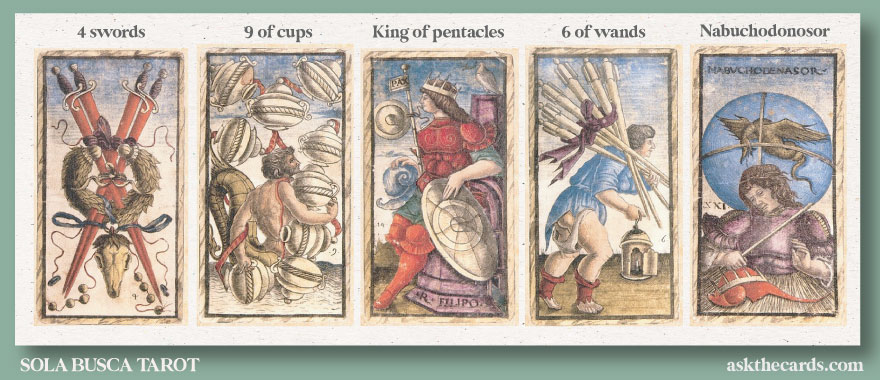
Other sources of inspiration for Waite and Smith were Christian symbolism, the works of Jean-Baptiste Alliette, Golden Dawn astrological attributions, Tarot de Marseilles, and Eliphas Levi’s and Paul Christian’s Egyptianized descriptions of the trumps.
Interestingly, Smith was only paid a flat fee for her work.
Apart from this, she didn’t benefit financially from this deck.
In fact, even her name didn’t appear on the deck, as the publisher (Rider) used their name instead. So, for a number of decades, people used to call this deck the Rider-Waite deck.
It is only in recent times that the tarot community has started using the name Rider-Waite-Smith (RWS) to honor her immense contributions that made this deck so popular.
When this deck was first published, it came with an accompanying guidebook, The Key to the Tarot. A year later, a revised version, The Pictorial Key to the Tarot, was published that featured black-and-white illustrations of all the cards.
The Story Continues…
After the deck was published, it was an instant hit.

In hindsight, it was probably Smith’s use of human figures and symbols that led to its popularity. ( that is exactly why I did not use the tarot of marseille and preferred the Rider Waite Smith tarot deck 🙂
The simple artwork and ease of understanding were surely additional reasons. In fact, this style of tarot became so popular that it became the dominant tarot style that most people know today!
Another proof of its immense fame was that the tarot deck was pirated in 1916 by American publisher DeLaurence.
Rider, the company, continued publishing the deck in various editions until 1939. It was probably due to the second world war that the publication stopped. It then started back again from 1971 to 1977.
During WWII, the original plates of the tarot deck were destroyed and Smith’s original drawings of the cards have been lost to time.
In 1971, the U.S. Games, Inc. acquired exclusive rights to the Rider-Waite name. In 2009, to celebrate the hundredth anniversary of the 1909 deck, the company issued a commemorative deck titled “The Smith-Waite Centennial Deck ( available HERE on amazon) .”

How Is The Deck Designed?
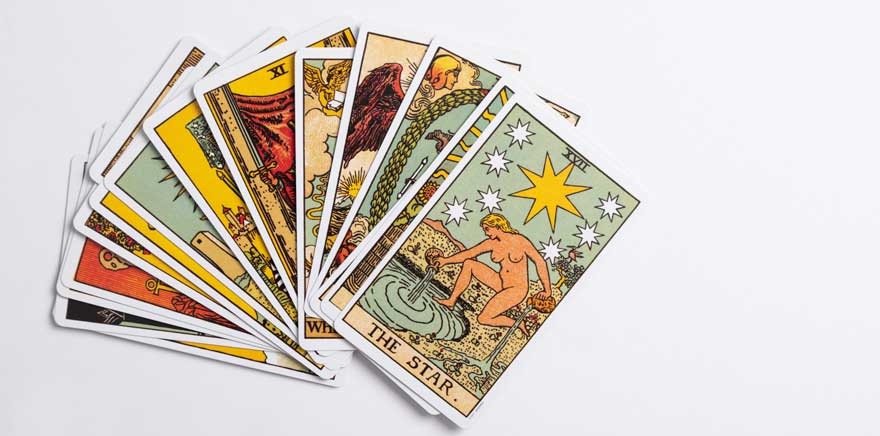
Now that we have taken a look at the history of the deck, let’s try to understand how it was designed. The Rider-Waite-Smith deck has 78 cards in total.
And each card has its own meanings, symbolism, and imagery.
The 78 cards are divided into two categories – Major Arcana cards and Minor Arcana cards.
The Major Arcana Cards
The Major Arcana is a set of 22 cards that portray universal themes and important archetypes.
If you go through the cards, you will realize that they represent the bigger events of life that teach you important spiritual lessons. This is probably why most tarot readers call them the big-picture cards.
The first card in the Major Arcana card is “The Fool” and it is card number 0. The last card in this set is “The World” and it is card number 21. The other cards in this category are:
“The Magician, The High Priestess, The Empress, The Emperor, The Hierophant, The Lovers, The Chariot, Strength, The Hermit, The Wheel of Fortune, Justice, The Hanged Man, Death, Temperance, The Devil, The Tower, The Star, The Moon, The Sun, and Judgement”.
The Minor Arcana Cards
The Minor Arcana is a set of 56 cards that portray everyday trials and tasks.
These cards are divided into 4 different suits: Pentacles, Swords, Cups and Wands. As such, there are 14 cards in each suit. Each one of the 4 suits represents a certain area of life such as money / material world (Pentacles), creativity / desire (Wands), feelings (Cups), intellect / thoughts (Swords).
These 14 cards in each suit are further divided into ten numbered cards (Ace through 10) and four court cards – Page, Knight, Queen, and King.
The court cards represent personality types and the numbered cards depicts different stages or milestones of the suit’s element.
The symbolism of the Minor Arcana goes even deeper than this. Each suit in this set also corresponds to one of the four elements of nature.
- The Cups suit represents the element of water and it corresponds to emotions and feelings.
- The Swords suit is linked to the element of air and it portrays conflict and communication.
- The Wands suit is associated with the element of fire and it represents passion and drive.
- The Pentacles suit represents the element of earth and it corresponds to money and the physical world.
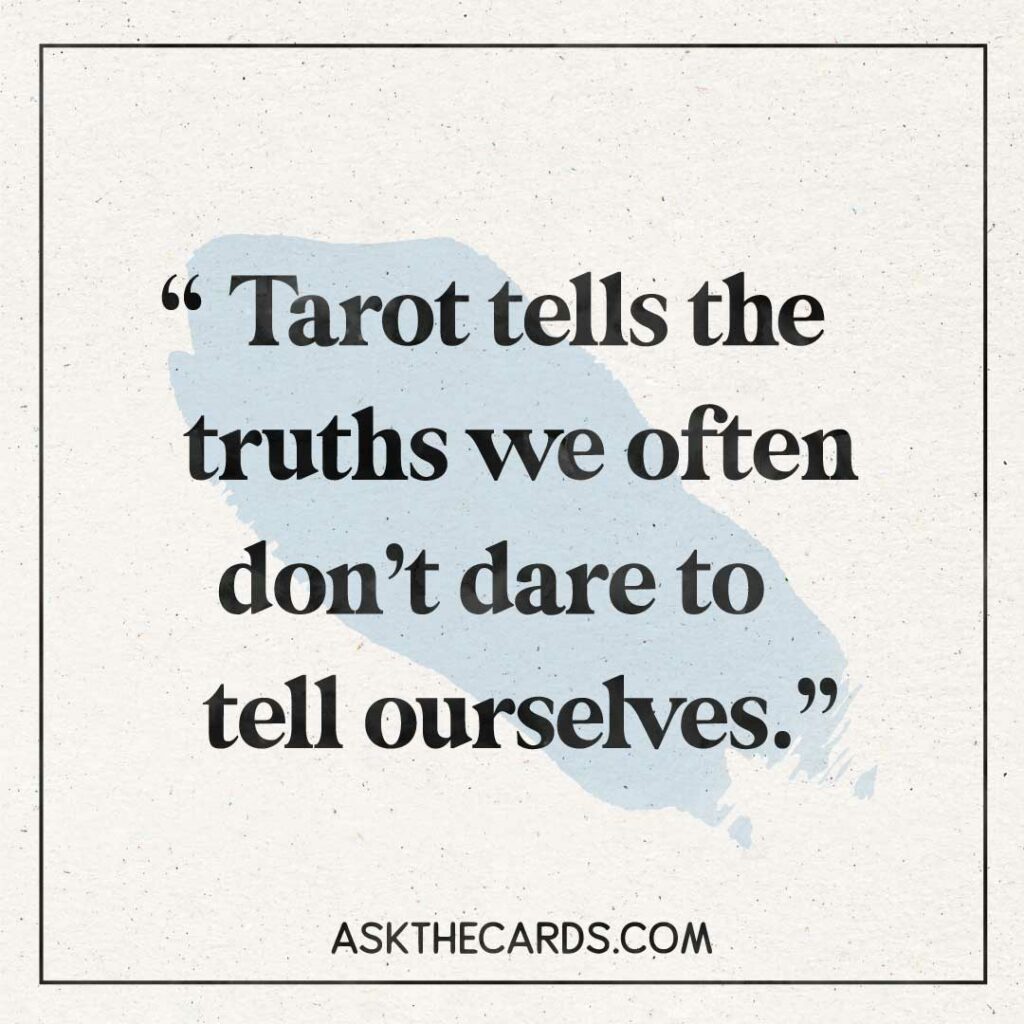
Some Notable Cards And Their Meanings
Now that the categorization of the cards is clear, let’s take a look at some notable cards and their meanings. This will give you a feel for the Rider-Waite-Smith deck.
1) The Magician

The Magician card is the second card in the Major Arcana after the fool ( which is a bit the beginning of the journey.)
It represents the power of manifestation, transformation, and creative energy.
In the Rider-Waite-Smith deck, it is depicted as a male figure, who is holding a wand in one hand and pointing towards the Earth with the other. This signifies his ability to use divine energy to manifest something in the physical realm.
Interestingly, this card also shows a sword, a cup, and a pentacle (apart from the wand in his hand). These are the four suits of the Minor Arcana. This shows that the Magician has mastery over the four elements represented by the four suits.
In a tarot reading, if you get this card, it portrays your ability to bring your dreams and desires into reality. It shows that you have the confidence, determination, and intention to manifest things in the physical realm.
2) The Empress
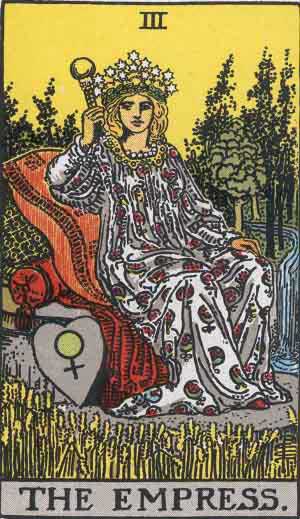
The Empress is the fourth card in the Major Arcana after the High priestess.
It represents abundance, creativity, and nurturing.
In the Rider-Waite-Smith deck, it is depicted as a royal female figure seated on a throne surrounded by lush vegetation. This signifies beauty, maternal love, and the Earth’s abundance.
In a tarot reading, if you get this card, it might be a message for you to connect to your intuitive wisdom and embody the power of creation. This could help you give birth to new ideas and lead you to abundance. This card also talks about motherhood so you might get this when you are expecting to have a child.
Another important message of this card could be related to self-care and self-love, reminding you that you can only nurture others when you first nurture yourself.

Legacy of The Deck
The Rider-Waite-Smith Tarot deck has undoubtedly left a huge legacy.
Earlier, I mentioned how this deck set the standard for what a tarot deck should look and feel like for the common people.
The various sources of inspiration that went into crafting this deck ensured that it is steeped in deep symbolism and relevance for mankind.
Also, its beautiful and intricate illustrations allowed for a much deeper exploration of the human psyche, archetypal energies, and spiritual teachings than ever before.
Today, this deck is one of the most popular and widely used decks in the world with most people having at least seen it. Not only that, it is one of the most respected decks as well, especially due to the contributions of Pamela Smith. Thank you dear Pamela 🙂
After it came out, the Rider-Waite-Smith deck inspired countless spin-off decks such as Aquarian, Robin Wood, Hudes, and Morgan Greer decks ( on amazon, i admit, my go to place to get the best deals haha ).
In fact, when deck creators create new tarot decks, they feel obliged to pay homage to this deck by incorporating it into their designs. Such has been its impact on the tarot community.
Today, this deck continues to inspire and guide budding tarot readers, providing a versatile tool for personal growth, self-reflection, and divination. It is truly a masterpiece that has cemented its legacy in the pages of history, not only in the world of tarot.

Copyright Status
As of now, the original version of the Rider–Waite tarot deck is in the public domain.
This is because, in a lot of countries, the copyright term is of 70 years after the death of the author. This includes any member of the collaborative team.
Arthur Waite died in 1942, while Pamela Smith passed away in 1951. So, if we add 70 years to the day Smith died, the original deck entered the public domain in 2021.
Also, it’s important to note that the deck was originally published in the United Kingdom. So, the deck is subject to the copyright laws of the UK.
As I mentioned above, U.S. Games Systems, Inc. has a copyright claim on the updated version that they published in 1971. However, this copyright only applies to the new material they added to the work done by Waite and Smith. So, only the designs on the back of the card and the box that comes with the card are covered under this copyright claim.
